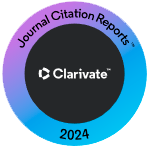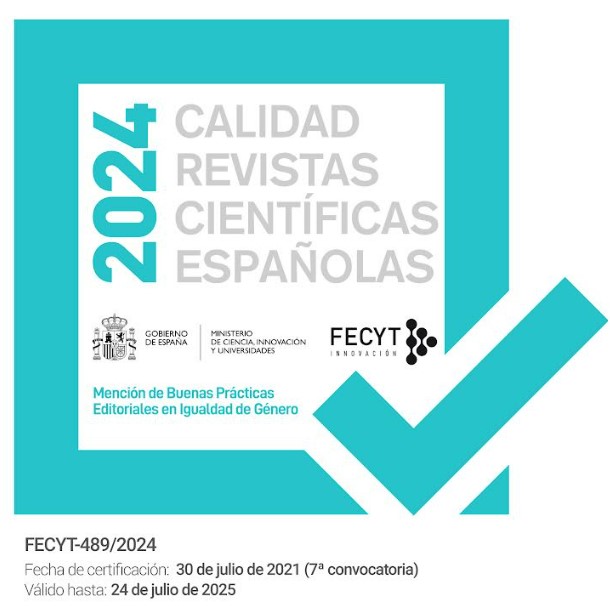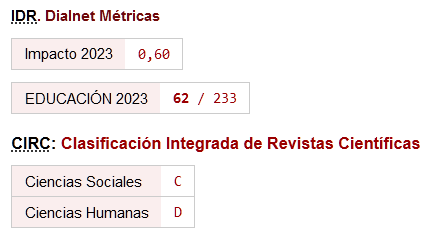Inactivity and stress brought about by the covid-19 pandemic: What is the situation with university students?
DOI:
https://doi.org/10.46661/ijeri.6018Keywords:
Covid-19, Physical Activity, Stress, StudentAbstract
The purpose of this study is to examine the physical activity levels of the before and during the pandemic, and the styles of coping with stress according to their physical activity levels, and the styles of coping with stress during the pandemic process according to gender of students Faculty of Sports Sciences. The research group of the study consists of 401 volunteer students (175 female; 206 male). The data were collected used the “International Physical Activity Questionnaire-Short Form (IPAQ-SF)”, and the “Ways of Coping Questionnaire” and personal information form. In the analysis of data; t test was used in pairwise comparisons and ANOVA test was used in multiple comparisons. According to the analysis results; During the Covid-19 pandemic, the physical activity rate decreased in both female and male students compared to the pre-pandemic period, and the physical activity level showed a significant difference in favor of male students according to the total MET score during the pandemic period. All students used the "confident approach" style the highest and the "submissive approach" the least in their coping styles; It was determined that girls used the submissive approach more than boys. A significant difference was found in the sub-dimensions of self-confident, helpless and optimistic approach according to physical activity levels. As a result, it can be said that the way of coping with stress of students with a high level of physical activity also affects positively. In this context, physical activity and exercise can be recommended to students in coping with stress.
Downloads
References
Acar, H. (2019). Bocce (volo) sporcularının stresle başa çıkabilme ile problem çözme becerileri arasındaki ilişkinin incelenmesi (Yüksek Lisans Tezi, Bartın Üniversitesi, Sosyal Bilimler Enstitüsü). Erişim Adresi: http://hdl.handle.net/11772/5416
Altuntaş, O. & Tekeci, Y. (2020). Effect of COVID 19 on Perceived Stress, Coping Skills, Self-Control and Self-Maleagement Skills. Research Square, 1-16. https://doi.org/10.21203/rs.3.rs-48393/v1
Ammar, A., Brach, M., Trabelsi, K., Chtourou, H., Boukhris, O., Masmoudi, L., et al. (2020). Effects of COVID-19 home confinement on eating behaviour and physical activity: results of the ECLB-COVID19 international online survey. Nutrients, 12(6), 1583. https://doi.org/10.3390/nu12061583
Aytaç, S. (2009). İş Stresi Yönetimi El Kitabı; İş Stresi: Oluşumu, Nedenleri, Başa Çıkma Yolları, Yönetimi, Labour Ministry-CASGEM, Ankara.
Babyak, M., Blumenthal, J.A., Hermale, S. et al, (2000). Exercise treatment for major depression: maintenance of therapeutic benefit at 10 months. Psychosom Med, 62(5), 633–8. Downloaded from http://journals.lww.com/psychosomaticmedicine
Bahçecioğlu, T.G., Köse, S. & Aksoy, M. (2021). Analysis of nursing students' obsessive and coping behaviors during the COVID‐19 pandemic. Perspectives in Psychiatric Care, 1-9. https://doi.org/10.1111/ppc.12728
Bao, Y., Sun, Y., Meng, S., Shi, J. & Lu, L. (2020). 2019-nCoV epidemic: address mental health care to em power society, Lancet, 395 (10224). https://doi.org/10.1016/S0140-6736(20)30309-3
Barutçugil, İ. (2004). Stratejik insan kaynakları yönetimi, Kariyer Yayıncılık, Yayın no:59, İstanbul.
Bermon, S., Castell, L.M., Calder, P.C., et al. (2017). Consensus statement Immuno nutrition and exercise. Exercise Immunology Review, 23, 8-50. http://www.isei.dk/index.php?pageid=32
Böke, İ. (2018). Spor Yapan Lise Öğrencilerinin Benlik Saygısı Anksiyete Düzeyi ve Stresle Başa Çıkma Becerilerinin İncelenmesi. (Master'sthesis, İstanbul Gelişim Üniversitesi Sosyal Bilimler Enstitüsü). Erişim Adresi. https://hdl.handle.net/11363/1327
Can, S, (2019). The determining of relationship Between physical activity and perceived stress level in security service semployees. Journal of Educationand Training Studies, 7(1), 149-155. https://doi.org/10.11114/jets.v7i1.3907
Cao, W., Fang, Z., Hou, G., Han, M., Xu, X., Dong, J. & Zheng, J. (2020). The psychological impact of the COVID-19 epidemic on college students in China. Psychiatry research, 287, 112934. https://doi.org/10.1016/j.psychres.2020.112934
Caspersen, C.J., Powell, K.E. & Christenson, G.M. (1985). Physical-activity, exercise, and physical fitnes Definitions and distinctions for health related research. Public Health Rep, 100(2),126–31. https://www.thelancet.com/action/showPdf?pii=S2215-0366%2820%2930073-0
Ceri, V. & Cicek, I. (2021). Psychological Well-Being, Depression and Stress During COVID-19 Pandemic in Turkey: A Comparative Study of Health care Professionals and Non-Health care Professionals. Psychology, Health & Medicine, 1-13. https://doi.org/10.1080/13548506.2020.1859566
Chekroud, S.R., Gueorguieva, R., Zheutlin, A.B., Paulus, M., Krumholz, H.M., Krystal, J.H. et al. (2018). Association Between physical exercise and mental health in 1,2 million individuals in the USA between 2011 and 2015: a cross-sectional study. Lancet Psychiatry, 5(9),739–46. https://doi.org/10.1016/S2215-0366(18)30227-X
Chen, Q., Liang, M., Li, Y., Guo, J., Fei, D., Wang, L., He, L., Sheng, C., Cai, Y., Li, X., Wang, J. & Zhang, Z. (2020). Mental health care for medical staff in China during the COVID-19 out break. The Lancet Psychiatry, 7(4), e15-e16. https://doi.org/10.1016/S2215-0366(20)30078-X
Chouchou, F., Augustini, M., Caderby, T., Caron, N., Turpin, N. A. & Dalleau, G. (2021). The importance of sleep and physical activity on well-being during COVID-19 lock down: Reunion island as a case study. Sleep medicine, 77, 297-301. https://doi.org/10.1016/j.sleep.2020.09.014
Cihan, E. & Pirinççi, C.Ş. (2020). Covid-19 Pandemi Sürecinde Genç Popülasyonun Yaşam Kalitesinin Fiziksel Aktivite Seviyesi ve Depresyon Düzeyi ile İlişkisi. Selçuk Sağlık Dergisi, 1(Covid-19 Özel), 41-53.
https://dergipark.org.tr/en/download/article-file/1180905
Deschasaux-Tanguy, M., Druesne-Pecollo, N., Esseddik, Y., de Edelenyi, F. S., Allès, B., Andreeva, V. A., ... & Touvier, M. (2021). Diet and physical activity during the Coronavirus disease 2019 (COVID-19) lock down (March–May 2020): results from the French Nutri Net-Santé cohort study. The American journal of clinical nutrition, 113(4), 924-938. https://doi.org/10.1093/ajcn/nqaa336
Dienstbier, R.A. (1991). Behavioral correlates of sympatho adrenal reactivite the toughness model. Medicine and Science in Sports and Exercise, 23(7), 846–52. https://doi.org/10.1249/00005768-199107000-00013
DiTella, M., Romeo, A., Benfante, A. & Castelli, L. (2020). Mental health of health care workers during the COVID-19 pandemic in Italy. Journal of Evaluation in Clinical Practice, 26(6), 1583-1587. https://doi.org/10.1111/jep.13444
Duan, L. (2020). Psychological interventions for people affected by the COVID-19 epidemic. The Lancet Psychiatry, 7(4), 300-302. https://doi.org/10.1016/S2215-0366(20)30073-0
Dunn, A.L., Trivedi, M.H. & O’Neal, H.A. (2001). Physical activity dose response effects on outcomes of depression and anxiety. Medicine and Science in Sports and Exercise, 33(6), S587–97. https://doi.org/10.1097/00005768-200106001-00027
Dursun, M., Yarayan, Y.E., Arı, Ç., Ulun, C. & Adaş, S.K. (2021). Covid-19 in Turkey: Leisure Boredom, Psychological Resilience, Physical Activity and Emotional State. IJERI: International Journal of Educational Research and Innovation, (15), 460-486. https://doi.org/10.46661/ijeri.5588
Dwyer, M.J., Pasini, M., De Dominicis, S. & Righi, E. (2020). Physical activity: Benefits and challenges during the COVID‐19 pandemic. Scandinavian journal of medicine & science in sports, 30(7), 1291. https://doi.org/10.1111/sms.13710
Edenfield, T.M. & Blumenthal, J.A. (2011). Exercise and stress reduction. In R. J. Contrada & A. Baum (Eds.), The handbook of stress science: Biology, psychology, and health (p. 301–319). Springer Publishing Company. https://books.google.com.tr/books?id=EXVlk8pnEKIC&lpg=PA301&ots=nUGsEEvhWB&lr&pg=PA509#v=onepage&q&f=false
Eek, F., Larsson, C., Wisén, A. & Ekvall-Hansson, E. (2021). Self-Perceived Changes in Physical Activity and the Relation to Life Satisfaction and Rated Physical Capacity in Swedish Adults during the COVID-19 Pandemic—A Cross Sectional Study. International Journal of Environmental Research and Public Health, 18(2), 671. https://doi.org/10.3390/ijerph18020671
Elbay, R.Y., Kurtulmus, A., Arpacioglu, S. & Karandere, E. (2020). Depression, anxiety, stress levels of physicians and associated factors in COVID-19 pandemics. Psychiatry Research 290. https://doi.org/10.1016/j.psychres.2020.113130
Eraslan, M. (2015). Spor Bölümlerinde Öğrenim Gören Üniversite Öğrencilerinin Kişilik Özelliklerinin ve Stresle Başa Çıkma Stillerinin Çeşitli Değişkenlere Göre İncelenmesi. Mehmet Akif Ersoy Üniversitesi Sosyal Bilimler Enstitüsü Dergisi, 7(12), 65-82. https://dergipark.org.tr/en/download/article-file/181849
Ergin, A., Uzun, S.U. & Bozkurt, A.İ. (2014). The methods of coping with the stress among medical Faculty students and the relationship Between sociodemographic characteristics and these methods. Firat Med J. 19(1), 31-37. http://www.firattipdergisi.com/pdf/pdf_FTD_870.pdf
Faulkner, J., O’Brien, W.J., McGrane, B., Wadsworth, D., Batten, J., Askew, C. D., ... & Lambrick, D. (2021). Physical activity, mental health and well-being of adults during initial COVID-19 containment strategies: A multi-country cross-sectional analysis. Journal of science and medicine in sport, 24(4), 320-326. https://doi.org/10.1016/j.jsams.2020.11.016
Fearnbach, S.N., Flanagan, E.W., Höchsmalen, C., Beyl, R.A., Altazan, A.D., Martin, C. K. & Redmale, L.M. (2021). Factors Protecting against a Decline in Physical Activity during the COVID-19 Pandemic. Medicine and Science in Sports and Exercise, Pennington Biomedical Research Center, Baton Rouge, LA. https://doi.org/10.1249/mss.0000000000002602
Fernández-Batanero, J. M., Román-Graván, P., Reyes-Rebollo, M. M., & Montenegro-Rueda, M. (2021). Impact of educational technology on teacher stress and anxiety: A literature review. International Journal of Environmental Research and Public Health, 18(2), 548. https://doi.org/10.3390/ijerph18020548
Fleshner, M. (2005). Physical activity and stress resistance: sympathetic nervous system adaptations prevent stress induced immuno suppression. Exercise and Sport Sciences Reviews, 33(3),120-126. https://doi.org/10.1097/00003677-200507000-00004.
Folkman, S. & Lazarus, R. S. (1980). An analysis of coping in a middle-aged community sample. Journal of healt hand social behavior, 219-239. https://doi.org/10.2307/2136617
Fu, W., Wang, C., Zou, L., Guo, Y., Lu, Z., Yan, S. & Mao, J. (2020). Psychological health, sleep quality, and coping styles to stress facing the COVID-19 in Wuhan, China. Translational psychiatry, 10(1), 1-9. https://doi.org/10.1038/s41398-020-00913-3
Füzéki, E., Schröder, J., Carraro, N., Merlo, L., Reer, R., Groneberg, D. A. & Banzer, W. (2021). Physical Activity duringthe First COVID-19-Related Lockdown in Italy. International Journal of Environmental Research and Public Health, 18(5), 2511. https://doi.org/10.3390/ijerph18052511
Garber, C.E., Blissmer, B., Deschenes, M.R. et al. (2011). Quantity and quality of exercise for developing and maintaining cardiorespiratory, musculoskeletal, and neuro motor fitness in apparently healthy adults: guidance for prescribing exercise. Medicine and Science in Sports and Exercise, 43(7),1334–59. https://doi.org/10.7916/D8CR5T2R
Gerber, M. & Puhse, U. (2009), Do exercise and fitness protect against stress-induced health complaints? A review of the literatüre. Scandinavian Journal of Public Health, 37(8), 801–19. https://doi.org/10.1177/1403494809350522
Gjaka, M., Feka, K., Bianco, A., Tishukaj, F., Giustino, V., Parroco, A. M., ... & Battaglia, G. (2021). The Effect of COVID-19 Lock down Measures on Physical Activity Levels and Sedentary Behaviour in a Relatively Young Population Living in Kosovo. Journal of Clinical Medicine, 10(4), 763. https://doi.org/10.3390/jcm10040763
Greenwood, B.N. & Fleshner, M. (2011). Exercise, stress resistance, and central serotonergic systems. Exercise and Sport Sciences Reviews, 39(3),140–9. https://doi.org/10.1097/JES.0b013e31821f7e45
Greenwood, B.N., Kennedy, S., Smith, T.P. et al. (2003). Voluntary free-wheel running selectively modulate scate cholamine content in peripheral tissues and c-Fos expression in the central sympathetic circuit following exposure to uncontrollable stress in rats. Neuroscience,120(1), 269–81. https://doi.org/10.1016/S0306-4522(03)00047-2
Hamer, M., Taylor, A. & Steptoe, A. (2006). The effect of acute aerobic exercise on stress related blood Pressure responses: a systematic review and meta-analysis. Biol Psychol, 71(2),183–90. https://doi.org/10.1016/j.biopsycho.2005.04.004
Hermassi, S., Sellami, M., Salmale, A., Al-Mohannadi, A. S., Bouhafs, E. G., Hayes, L. D. & Schwesig, R. (2021). Effects of COVID-19 Lockdown on Physical Activity, Sedentary Behavior, and Satisfaction with Life in Qatar: A Preliminary Study. International Journal of Environmental Research and Public Health, 18(6), 3093. https://doi.org/10.3390/ijerph18063093
Huang, Y. & Zhao, N. (2020). Generalized anxiety disorder, depressive symptoms and sleep quality during COVID-19 out break in China: a web-based cross-sectional survey. Psychiatry research, 288, 112954. https://doi.org/10.1016/j.psychres.2020.112954
Inbar, L. & Shinan-Altmale, S. (2020). Emotional reactions and subjective health status during the COVID-19 pandemic in Israel: the mediating role of perceived susceptibility. Psychology, Health & Medicine, 1-10. https://doi.org/10.1080/13548506.2020.1858490
Kar, N., Kar, B. & Kar, S. (2021). Stress and coping during COVID-19 pandemic: Result of an online survey. Psychiatry research, 295, 113598. https://doi.org/10.1016/j.psychres.2020.113598
Karabağ, B. (2019). Spor yapan ve yapmayan ortaöğretim öğrencilerinin kişilik özellikleri, karar verme stilleri ve stresle başa çıkma stratejilerinin incelenmesi. (Yüksek Lisans Tezi, Bartın Üniversitesi, Eğitim Bilimleri Enstitüsü). Erişim Adresi: http://hdl.handle.net/11772/2957
Karagün, E. (2020). Tarvmatik Yaşantı Covid-19 Sürecinde Ruh Sağlığın Korunması ve Egzersiz Desteği. Spor bilimlerinde Güncel Konular ve Araştırmalar-2. Çizgi Kitabevi, Haziran, 6-34. https://avesis.kocaeli.edu.tr/yayin/327b1578-3aa2-4298-b514-894dba256a02/spor-bilimlerinde-guncel-konular-ve-arastirmalar-2-covid-19-pandemisiyle-2020
Khachfe-Hussein, H., Mohamad, C., Julie, S., Hamza, S., Eldeen, M,B. & Fares, M. (2020). An epidemiological lstudy on COVID-19: A rapidly spreading disease. Cureus, 12, e7313. https://doi.org/10.7759/cureus.7313
Kızar, O., Kargün, M., Togo, O. T., Biner, M. & Pala, A. (2016). Üniversite öğrencilerinin fiziksel aktivite düzeylerinin incelenmesi. Marmara Universiity Journall off Sport Science, 1(1); 63-74. https://doi.org/10.22396/sbd.2016.6
Konstantinidis, C., Konstantoulas, D., Bebetsos, E. & Bebetsos, G. (2021). COVID-19 Lock down and Physical Activity: How Do Sexes React?. Aquademia, 5(1), ep21007. https://doi.org/10.21601/aquademia/10808
León-Zarceño, E., Moreno-Tenas, A., BoixVilella, S., García-Naveira, A. & Serrano-Rosa, M.A. (2021). Habits and psychological factors associated with changes in physical activity due to COVID-19 confinement. Frontiers in Psychology, 12, 4. https://doi.org/10.3389/fpsyg.2021.620745
Lesser, I.A. & Nienhuis, C.P. (2020). The impact of COVID-19 on physical activity behavior and well-being of Canadians. International journal of environmental research and public health, 17(11), 3899. https://doi.org/10.3390/ijerph17113899
Li, S,W., Wang, Y., Yang, Y.Y., Lei, X.M. & Yang, Y.F. (2020), Analysis of influencing factors of anxiety and emotional disorders in children and Adolescents during home isolation during the epidemic of novel Coronavirus pneumonia. ChineseJournal of Child Health, 1–9. https://doi.org/10.1017/S0007114520005048
Makaracı, Y., Güler, M., Kozak, M., Pamuk, Ö. & Soslu, R. (2020), Fiziksel Aktivite ve Bazal Metabolik Hız Değerleri Spor Bilimleri Özel Yetenek Sınavı Parkur Süresinde Ne Kadar Etkilidir?.Spor Bilimleri Araştırmaları Dergisi, 5(2), 282-292. https://doi.org/10.25307/jssr.830922
Mamun, M. A., Sakib, N., Gozal, D., Bhuiyan, A. I., Hossain, S., Bodrud-Doza, M., et al. (2021). The COVID-19 pandemic and serious psychological consequences in Bangladesh: a population-based nation wide study. Journal of affective disorders, 279, 462-472. https://doi.org/10.1016/j.jad.2020.10.036
Marazziti, D., Pozza, A., DiGiuseppe, M., Conversano, C. (2020). The psychosocial impact of COVID-19 pandemic in Italy: a lesson for mental health prevention in the first severely hit European country. Psychol trauma, 12:531–533. https://doi.org/10.1037/tra0000687.
Martínez-de-Quel, Ó., Suárez-Iglesias, D., López-Flores, M. & Pérez, C. A. (2021). Physical activity, dietary habits and sleep quality before and during COVID-19 lock down: A longitudinal study. Appetite, 158, 105019. https://doi.org/10.1016/j.appet.2020.105019
Maugeri, G., Castrogiovanni, P., Battaglia, G., Pippi, R., D'Agata, V., Palma, A., ... & Musumeci, G. (2020). The impact of physical activity on psychological health during Covid-19 pandemic in Italy. Heliyon, 6(6), e04315. https://doi.org/10.1016/j.heliyon.2020.e04315
McCarthy, H., Potts, H.W. & Fisher, A. (2021). Physical Activity Behavior Before, During, and After COVID-19 Restrictions: Longitudinal Smart phone-Tracking Study of Adults in the United Kingdom. Journal of Medical Internet Research, 23(2), e23701. https://doi.org/10.2196/23701
McKnight-Eily, L. R., Okoro, C. A., Strine, T. W., Verlenden, J., Hollis, N. D., Njai, R., ... & Thomas, C. (2021). Racial and ethnic disparities in the prevalence of stress and worry, mental health conditions, and increased substances use among adults during the COVID-19 pandemic—United States, April and May 2020. Morbidity and Mortality Weekly Report, 70(5), 162. https://doi.org/10.15585/mmwr.mm7005a3
Mcmahon, E.M., Corcoran, P., O’regan, G., et al. (2017). Physical activity in Europea Adolescents and associations with anxiety, depression and well-being. European Child & Adolescent Psychiatry, 26(1), 111-122. https://doi.org/10.1007/s00787-016-0875-9
Meza, E.I.A. & López, J.A.H. (2021). Physical activity in university students athletes, prior and in Confinement due to pandemic associated with COVID-19. Retos: nuevas tendencias en educación física, deporte y recreación,(39), 112. https://dialnet.unirioja.es/servlet/articulo?codigo=7615356
Morres, I.D., Galanis, E., Hatzigeorgiadis, A., Androutsos, O. & Theodorakis, Y. (2021). Physical Activity, Sedentariness, Eating Behaviour and Well-Beingduring a COVID-19 Lock down Period in Greek Adolescents. Nutrients, 13(5), 1449. https://doi.org/10.3390/nu13051449
Niemale, D.C. & Wentz, L.M. (2019). The compelling link Between physical activity and the body’s defense system. Journal of Sport and Health Science, 8, 201-217. https://doi.org/10.1016/j.jshs.2018.09.009
Oducado, R.M., Tuppal, C., Estoque, H., Sadang, J., Superio, D., Real, D.V., ... & DelaRosa, R. (2021). Internet use, e Health literacy and fear of COVID-19 among nursing students in the Philippines. International Journal of Educational Research and Innovation, (15), 487–502. https://doi.org/10.46661/ijeri.5520
Öztürk, M. (2005). Üniversitede egitim-ögretim gören ögrencilerde Uluslararasi Fiziksel Aktivite Anketi'nin geçerliligi ve güvenirligi ve fiziksel aktivite düzeylerinin belirlenmesi (Research on Reliability and Validity of International Physical Activity Questionnaire and Determination of Physical Activity Level in University Students). Hacettepe University, Intitute of Health Sciences Mester Thesis, Ankara, Turkiye.
Patsali, M.E., Mousa, D.P.V., Papadopoulou, E.V., Papadopoulou, K.K., Kaparounaki, C.K., Diakogiannis, I. & Fountoulakis, K.N. (2020). University students’ changes in mental health status and determinants of behavior during the COVID-19 lock down in Greece. Psychiatry research, 292, 113298. https://doi.org/10.1016/j.psychres.2020.113298
Peretti-Watel, P., Alleaume C., Léger D., Beck F. & Verger P. (2020). Anxiety, depression and sleep problems: a second wave of COVID-19. General Psychiatry, 33(5). https://doi.org/10.1136/gpsych-2020-100299
Pérez-Cano, H.J., Moreno-Murguía, M.B., Morales-López, O., Crow-Buchanan, O., English, J.A., Lozano-Alcázar, J., & Somilleda-Ventura, S. A. (2020). Anxiety, depression, andstress in response to the coronavirus disease-19 pandemic. Cirugia y cirujanos, 88(5), 562-568. https://doi.ord/10.24875/CIRU.20000561
Puccinelli, P. J., da Costa, T. S., Seffrin, A., de Lira, C. A. B., Vancini, R. L., Nikolaidis, P. T., ... & Andrade, M. S. (2021). Reduced level of physical activity during COVID-19 pandemic is associated with depression and anxiety levels: an internet-based survey. BMC Public Health, 21(1), 1-11. https://doi.org/10.1186/s12889-021-10684-1
Qin, F., Song, Y., Nassis, G. P., Zhao, L., Dong, Y., Zhao, C., ... & Zhao, J. (2020). Physical activity, screen time, and emotional well-being during the 2019 novel Coronavirus out break in China. International Journal of Environmental Research and Public Health, 17(14), 5170. https://doi.org/10.3390/ijerph17145170
Robinson, E., Boyland, E., Chisholm, A., Harrold, J., Maloney, N.G., Marty, L., ... & Hardmale, C.A. (2021). Obesity, eating behavior and physical activity during COVID-19 lockdown: A study of UK adults. Appetite, 156, 104853. https://doi.org/10.1016/j.appet.2020.104853
Romero, C.S., Catalá J., Delgado C., Ferrer C., Errando C. & Iftimi A. (2020). COVID-19 psychological impact in 1309 health care workers in Spain: the PSIMCOV group. Psychological Medicine, 14, 1-7. https://doi.org/10.1017/S0033291720001671
Rutkowska, A., Kacperak, K., Rutkowski, S., Cacciante, L., Kiper, P., &Szczegielniak, J. (2021). The Impact of Isolation Due to COVID-19 on Physical Activity Levels in Adult Students. Sustainability, 13(2), 446. https://doi.org/10.3390/su13020446
Salmon, P. (2001). Effects of physical exercise on anxiety, depression, and sensitivity to stress: a unifying theory. Clinical Psychology Review, 21(1), 33–61. https://doi.org/10.1016/S0272-7358(99)00032-X
Sarıbaş, S. (2018). Üniversite Öğrencilerinde Öğün Sıklığı, Öğün Örüntüsü ve Beslenme Durumunun Belirlenmesi ve Fiziksel Aktivite Düzeyi ile Karşılaştırılması. (Hacettepe Üniversitesi, Sağlık Bilimleri Enstitüsü, Yüksek Lisans Tezi, Ankara). Erişim Adresi: http://hdl.handle.net/11655/4616
Savitsky, B., Findling, Y., Ereli, A., & Hendel, T. (2020). Anxiety and coping strategies among nursing students during the covid-19 pandemic. Nurse Education in Practice, 46, 102809. https://doi.org/10.1016/j.nepr.2020.102809
Shechter, A., Diaz, F., Moise, N., Anstey, D. E., Ye, S., Agarwal, S., ... & Abdalla, M. (2020). Psychological distress, coping behaviors, and preferences for support among New York health care workers during the COVID-19 pandemic. General hospital psychiatry, 66, 1-8. https://doi.org/10.1016/j.genhosppsych.2020.06.007
Srivastav, A. K., Sharma, N., &Samuel, A. J. (2021). Impact of Coronavirus disease-19 (COVID-19) lock down on physical activity and energy expenditure among physiotherapy professionals and students using web-based open E-survey sent through Whats App, Facebook and Instagram messengers. Clinical Epidemiology and Global Health, 9, 78-84. https://doi.org/10.1016/j.cegh.2020.07.003
Stanton, R., To, Q.G., Khalesi, S., Williams, S.L., Alley, S. J., Thwaite, T.L. et al. (2020). Depression, anxiety and stress during COVID-19: associations with changes in physical activity, sleep, tobacco and alcohol use in Australian adults. International Journal Of Environmental Research and Public Health, 17(11), 4065. https://doi.org/10.3390/ijerph17114065
Stockwell, S., Trott, M., Tully, M., Shin, J., Barnett, Y., Butler, L., et al. (2021). Changes in physical activity and sedentary behaviours from before to during the COVID-19 pandemic lock down: a systematic review. BMJ Open Sport & Exercise Medicine, 7(1), e000960. http://dx.doi.org/10.1136/bmjsem-2020-000960
Stubbs, B., Vancampfort, D., Firth, J., Schuch, F.B., Hallgren, M., Smith, L. et al. (2018). Relationship Between sedentary behavior and depression: A mediation analysis of influential factors Across the life span among 42,469 people in low and middle-income countries. Journal of Affective Disorders, 229, 231–8. https://doi.org/10.1016/j.jad.2017.12.104
Suata, Ö.C. (2018). 8 haftalık pilates egzersizlerinin kadın konukevinde kalan şiddet mağduru kadınların psikolojik dayanıklılık, bilişsel çarpıtma ve stresle başa çıkma tarzları üzerine etkisi. (Yüksek Lisans Tezi, Kocaeli Universitesi, Sağlik Bilimleri Enstitüsü). Erişim Adresi: http://dspace.kocaeli.edu.tr:8080/xmlui/handle/11493/2281
Şahin, N.H. ve Durak, A. (1995). ‘Stresle Başa Çıkma Tarzları Ölçeği’; Üniversite Öğrencileri İçin Uyarlanması’. Türk Psikoloji Dergisi, 10(34), 56-73. https://www.researchgate.net/publication/233792095
Tabachnick, B.G. & Fidell, L.S. (2013). Using multivariate statistics: International edition. Pearson 2012. https://www.pearsonhighered.com/assets/preface/0/1/3/4/0134790545.pdf
Temel, E., Bahar, A. & Çuhadar, D. (2007). Öğrenci hemşirelerin stresle baş etme tarzları ve depresyon düzeylerinin belirlenmesi. Fırat Sağlık Hizmetleri Dergisi, 2(5), 107-118.
Tözün, M., Sözmen, M. K. & Babaoğlu, A. B. (2017). Türkiye’nin batısında bir Üniversite’nin sağlık ile ilişkili okullarında beslenme alışkanlıkları ve bunun obezite, fizik aktivite ve yaşam kalitesi ile ilişkisi. Türk Dünyası Uygulama ve Araştırma Merkezi Halk Sağlığı Dergisi; 2(1). https://dergipark.org.tr/en/download/article-file/545977
USDHHS, (1999). Physical activity and health: a report of the Surgeon General, U.S. Department of Health and Humale Services. Centers for Disease Control and Prevention, National Center for Chronic Disease Prevention and Health Promotion. Atlanta. http://www.cdc.gov/nccdphp/sgr/pdf/execsumm.pdf
Üstün, N.A. & Üstün, Ü.D. (2020). Kadın Voleybolcularda Stres Yönetiminin Başa Çıkma Yaklaşımları Açısından İncelenmesi. Spormetre Beden Eğitimi ve Spor Bilimleri Dergisi, 18(3), 128-135. https://doi.org/10.33689/spormetre.687456
Vancampfort, D., Hallgren, M., Schuch, F., Stubbs, B., Smith, L., Rosenbaum, S. et al. (2020). Sedentary behavior and depression among community-dwelling adults aged>/ = 50 years: Results from the irish longitudinal study on Ageing. Journal of Affective Disorders, 262:389–96. https://doi.org/10.1016/j.jad.2019.11.066
Varma, P., Junge, M., Meaklim, H. & Jackson, M. L. (2021). Younger people are more vulnerable to stress, anxiety and depression during COVID-19 pandemic: A global cross-sectional survey. Progress in Neuro-Psycho pharmacology and Biological Psychiatry, 109, 110236. https://doi.org/10.1016/j.pnpbp.2020.110236
Vassigh, G. (2012). Üniversite öğrencilerinin fiziksel aktivite durumları ile sağlıklı beslenme indekslerinin değerlendirilmesi. (Yüksek Lisans Tezi, Hacettepe Üniversitesi, Sağlık Bilimleri Enstitüsü, Ankara). Erişim Adresi: http://hdl.handle.net/11655/1563
Wang, X., Hegde, S., Son, C., Keller, B., Smith, A. & Sasangohar, F. (2020). Investigating mental health of US college students during the COVID-19 pandemic: cross-sectional Survey study. Journal of Medical Internet Research, 22(9), e22817. https://doi.org/10.2196/22817
Wathelet, M., Duhem, S., Vaiva, G., Baubet, T., Habran, E., Veerapa, E., ... & D’Hondt, F. (2020). Factors associated with mental health disorders among university students in France confined during the COVID-19 pandemic. JAMA network open, 3(10). https://doi.org/10.1001/jamanetworkopen.2020.25591
Wilke, J., Mohr, L., Tenforde, A. S., Edouard, P., Fossati, C., González-Gross, M., ... & Hollander, K. (2021). A pandemic with in the pandemic? Physical activity levels substantially decreased in countries affecte dby COVID-19. International Journal of Environmenta lResearch and Public Health, 18(5), 2235. https://doi.org/10.3390/ijerph18052235
Wilson, O. W., Holland, K. E., Elliott, L. D., Duffey, M. & Bopp, M. (2021). The Impact of the COVID-19 Pandemic on US College Students’ Physical Activity and Mental Health. Journal of Physical Activity and Health, 18(3), 272-278. https://doi.org/10.1123/jpah.2020-0325
Wipfli, B.M., Rethorst, C.D. & Landers, D. M. (2008). The anxiolytic effects of exercise: a meta-analysis of randomized trials and dose–response analysis. Journal of Sport and Exercise Psychology, 30(4), 392-410. https://doi.org/10.1123/jsep.30.4.392
World Health Organization (2020). Global Action Plan on Physical Activity 2018-2030: More active people for a healthier world. https://www.who.int/ncds/prevention/physical-activity/global-action-plan-2018-2030/en/
Xiao, C, (2020). A novel approach of consultation on 2019 novel coronavirus (COVID-19)- Related psychological and mental problems: structured letter Therapy. Psychiatry Investigation, 17 (2), 175–176. https://doi:10.30773/pi.2020.0047
Yan, L., Gan, Y., Ding, X., Wu, J. & Duan, H. (2021a). The relationship Between perceived stress and emotional distress during the COVID-19 out break: Effects of boredom proneness and coping style. Journal of Anxiety Disorders, 77, 102328. https://doi.org/10.1016/j.janxdis.2020.102328
Yan, S., Xu, R., Stratton, T. D., Kavcic, V., Luo, D., Hou, F., ... & Jiang, Y. (2021b). Sex differences and psychological stress: responses to the COVID-19 pandemic in China. BMC Public Health, 21(1), 1-8. https://doi.org/10.1186/s12889-020-10085-w
Yang, Y., Li, W., Zhang, Q., Zhang, L., Cheung, T. & Xiang, Y.T. (2020). Mental health services for older adults in China during the COVID-19 out break. Lancet Psychiatry, 20 30079-1. https://doi.org/10.1016/S2215-0366(20)30079-1
Yerlisu L.T. & Haşıl K.N. (2017). Fiziksel aktivite düzeyinin pozitif ve negatif duygu durumuna etkisinin cinsiyete göre karşılaştırılması: Akdeniz ve Uludağ Üniversiteleri örneği. Journal of Humale Sciences, 14(4), 3177-3187. https://doi:10.14687/jhs.v14i4.4478
Zhang, X., Zhu, W., Kang, S., Qiu, L., Lu, Z. & Sun, Y. (2020). Association Between physical activity and mood states of children and adolescents in socialisolation during the CoViD-19 epidemic. International Journal of Environmenta Lresearch And Public health, 17(20), 7666. https://doi.org/10.3390/ijerph17207666
Zhang, Y., Zhang, H., Ma, X. & Di, Q. (2020). Mental health problems during the COVID-19 pandemics and the mitigation effects of exercise: a longitudinal study of college students in China. International Journal of Environmental Research and Public Health, 17(10), 3722. https://doi.org/10.3390/ijerph17103722
Downloads
Published
How to Cite
Issue
Section
License
Copyright (c) 2021 MELEK GÜLER, Melek Kozak, Zehra Certel, Nazlı Yanar

This work is licensed under a Creative Commons Attribution-NonCommercial-NoDerivatives 4.0 International License.












